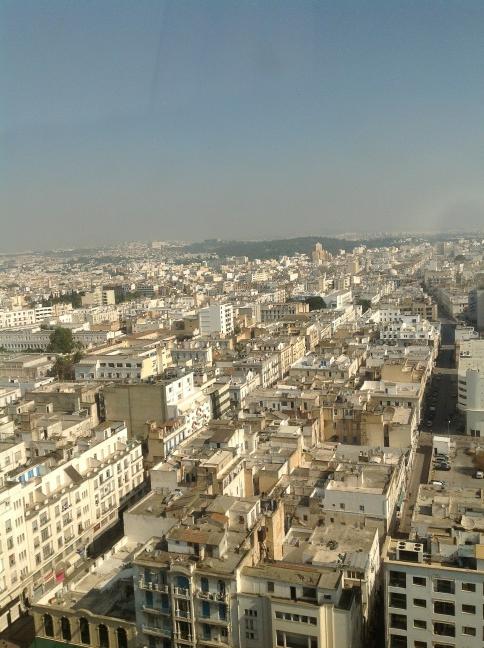- Who We Are
- How We Work
- Regional / Country Initiatives
- Legacy
- Core Themes
- Working Groups
- Portfolio & Results
- Newsroom
- Resources
Setting the Right Course for Sana’a
A CDS has helped Sana'a lay the foundation of strategic planning and stakeholder engagement, enabling the city to build on its strengths, better manage its assets, spur sustained private sector-led growth, and ensure socio-economic integration of the poor
Sana’a is Yemen’s political and cultural capital and its primary centre of commerce. Its well-preserved medieval core has also historically been a tourism magnet. However, in the past few decades, Sana’a has struggled with rapid population growth and now has the largest concentration of poor people in the country. The Arab Spring uprisings and the resulting leadership changes and ongoing instability have exposed many fault-lines in Yemen itself.
The city’s population has increased more than tenfold in the past 30 years, to about two million people. Many new residents live in scattered informal settlements, and there is little unused land and many ownership disputes. Critically, half of the households lack piped drinking water, and the city’s aquifer is projected to be depleted within the next decade. Sana’a is further hampered by an inefficient government structure and a poorly skilled city workforce.
To promote more sustainable development for Sana’a, the Cities Alliance funded a City Development Strategy (CDS). It brought together public, private, and civil society representatives to lay the foundation of strategic planning and stakeholder engagement that would enable the city to build on its strengths, better manage its assets, spur sustained private-sector-led growth, and ensure socio-economic integration of the poor.
A Sustainable Growth Strategy
The result was a strategy and a set of recommended actions focusing on: 1) economic development; 2) institutional strengthening; 3) better financial management; 4) improved urban planning; and 5) a comprehensive approach to urban upgrading.
It was recognised that strong and sustained economic growth is needed to meet the city’s many challenges. Specifically, the city must stimulate private-sector growth, especially labour-intensive (but not water-intensive) industries that could generate employment for the poor. It should build on the city’s relative strengths, which include a more educated populace, decent infrastructure, and proximity to wealthy countries. But Sana’a must become more business-friendly, by tackling corruption and other issues.
The municipal government must also be restructured and improved, incorporating planning and supervision in parallel with day-to-day service delivery. The city administration should be unified into one body, and staff should receive appropriate training.
Financial management should focus on enhancing revenue (perhaps by improving public assets and revenue collection methods) and linking it to improved service delivery. Promotional campaigns could raise awareness of both the necessity and the advantages of paying taxes.
With these strategies in mind, recommendations were made to address the physical, environmental, and institutional problems facing urban planners. One priority would be to update the master plan. And because lack of access to land is a critical obstacle for growth, there should be a clear mechanism for land management and disposition, and concepts such as land banking (the municipality acquiring land in key fringe areas for future development) need to be considered. Also, a cadre of young, motivated employees needs to be trained in urban planning. The water shortage could be addressed by restricting water-consuming industries and irrigation and seeking new sources of water.
Comprehensive urban planning requires systematic information on Sana’a’s informal settlements. The team members estimated that 35 informal settlements are home to up to 21 percent of the population, and that they are growing at an even faster rate than the city overall.
There is therefore a need to not only deal with existing informal areas, but also to anticipate and prepare for future growth. In addition to fixing existing problems (such as lack of services and unsanitary conditions), a planning approach should organise and guide rather than prohibit informal settlement growth.
Far-Reaching Benefits
Several other activities were carried out alongside the City Development Strategy. These included the development of terms of reference for a comprehensive update of the Sana’a master plan; securing a USD 300,000 grant to create a flood management and hazard risk management plan; and an additional grant for a climate change study.
The strategy is a living document that will need to be revised every few years to remain relevant. In fact, conditions have already changed dramatically; the recent Arab Spring conflicts have led to a change in Yemen’s government, and there remains a fragile security situation and the threat of a humanitarian crisis due to food scarcity.
The strategy development process has helped to build the local government’s planning capacity and improve collaboration and communication. It allowed the central and local governments to forge better links and build consensus to move forward with decentralisation reform, which is critical to making local governments more efficient and effective. It also strengthened links between the municipality and the private sector, as well as other key stakeholders. All of these legacies will benefit the city and the country during the national rebuilding period.
Lessons Learned
Strong leadership at the highest levels (such as the Sana’a mayor and national ministers) ensured buy-in from all stakeholders. The process also revealed the need for better coordination between a capital city and the central government, to ensure that lessons and recommendations from the city’s strategy development inform the federal government’s strategies.
A local CDS coordinator is also key, to give local stakeholders a point person for inquiries and input. And flexibility is critical to account for weak local government capacities; resources are limited, and delays need to be factored in and informed trade-offs need to be made among competing priorities.
|

